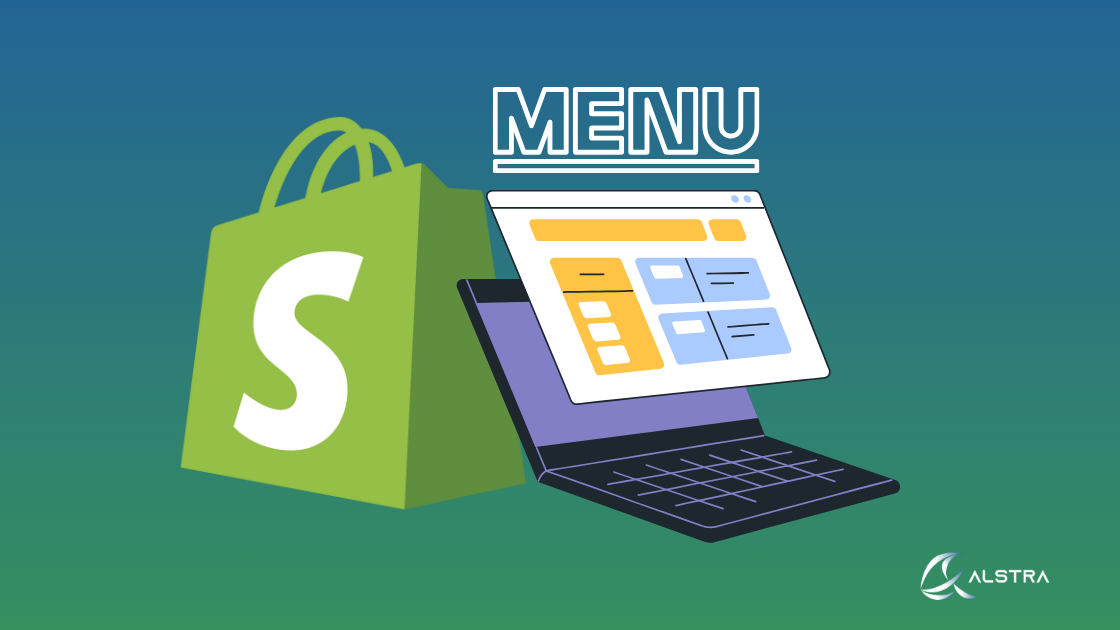The foundation of good e-commerce is efficient menu management. For Canadian Shopify stores, well crafted navigation can significantly affect user experience, conversion rates, and finally your bottom line. Let’s explore the foundations of designing and maximizing your Shopify menus from a Canadian point of view.
The Foundation: Accessing and Managing Your Menus
Navigation begins in your Shopify admin dashboard under Content > Menus. This central hub gives you complete control over both main and footer menus, with an intuitive interface that displays your existing menu structures. The platform’s drag-and-drop functionality allows for real-time adjustments as your store evolves.
Modifying Your Menu Items: The Essentials
Renaming for Clarity and Conversion
When updating product categories or refreshing seasonal promotions, simply click Edit beside the target item to modify its label. While Shopify allows up to 255 characters, research indicates that concise labels under 20 characters perform best, particularly for mobile responsiveness.
Using Shopify’s localization tools, Canadian companies serving our bilingual populations should think about creating language-specific menus. This may require some theme adjustments, but the investment pays dividends in customer satisfaction, especially when targeting Québec markets.
Updating Destinations That Convert
Changing where your menu items lead is easy: Click the x icon to clear the current link; then, choose a new destination from Shopify’s supported categories. Collections are particularly valuable—data shows that 36% of top-performing stores prioritize collection links in their navigation.
Always use HTTPS protocols and apply cross-domain tracking to preserve analytics accuracy when connecting to outside sites. For Canadian companies combining with province-specific services or compliance pages, this is particularly crucial.
Strategic Menu Organization: The Canadian Approach
Intelligent Hierarchy Development
The ⠿ handle on Shopify’s interface lets you move menu items click-and-drag-wise. With most themes allowing up to two submenu levels, this capability applies to top-level items as well as nested drop-downs.
As you arrange your navigation, keep logical grouping in line with Canadian buying trends. For instance, grouping winter clothing collections makes perfect sense given our climate concerns, but stressing maple syrup products might be appropriate for visitor-oriented stores.
Mobile Optimization: A Canadian Necessity
With 63% of Canadian e-commerce traffic coming from mobile devices, testing your menu structure across all screen sizes is non-negotiable. Shopify themes automatically adjust menu presentation, but complex hierarchies often require collapsible “hamburger” menus on mobile views.
Ensure your touch targets meet WCAG 2.1 accessibility standards of at least 44×44 pixels for menu items—particularly important as Canadian law increasingly emphasizes digital accessibility compliance.
Adding New Navigation Elements: Best Practices
The process for adding menu items is straightforward:
- Navigate to Content > Menus and select your target menu
- Click Add menu item
- Define the name using customer-centric terminology
- Choose the appropriate link type from Shopify’s options
- Position strategically—data suggests center-positioned items receive 23% more clicks than edge placements
For Canadian merchants targeting multiple provinces, consider these advanced implementations:
- Create geo-targeted menus using Shopify Markets for province-specific offerings
- Integrate provincial tax calculators through informational menu links
- Highlight bilingual support via dedicated menu items for French-speaking customers
Removing Outdated Elements: Do It Right
When it’s time to remove menu items, hover over the target row and select the trash icon. Before deletion, however, take these important steps:
- Check for linked resources (deleting a collection automatically removes associated menu items)
- Update any theme templates referencing the menu ID
- Implement 301 redirects if the URL had significant organic traffic
Although Shopify does not natively support bulk menu deletion, Canadian stores with large catalogues can export menu structures CSV, edit in spreadsheet software, and reimport using Shopify’s bulk editor—particularly helpful for seasonal overhauls.
Canadian-Specific Optimization Strategies
Cultural and Linguistic Considerations
Serving Canada’s diverse population requires thoughtful navigation design:
- Bilingual Implementation:
- Deploy language-specific menu variants through Shopify’s multi-language capabilities
- Position language switchers prominently (top-right corner is the established convention)
- Regional Customization:
- Highlight Canada Post integration in shipping-related menus
- Feature provincial compliance pages (e.g., Québec’s Consumer Protection Act resources)
- Showcase Canadian-made products with dedicated collections
UX Best Practices for Canadian Consumers
- Information Architecture:
- Limit top-level items to 7±2 choices to prevent cognitive overload
- Implement mega-menus for stores with extensive product catalogues
- Structure categories in ways that reflect Canadian shopping habits
- Mobile Performance:
- Deploy sticky navigation bars for easy access
- Test menu performance under Canada’s varied network conditions
- Optimize load times for rural areas with limited connectivity
- Accessibility Enhancements:
- Ensure 4.5:1 contrast ratio for menu text
- Add ARIA labels for screen readers
- Support keyboard navigation for users with mobility impairments
Measuring Success: Analytics and Iteration
The most effective Canadian Shopify stores continuously monitor menu performance through:
- Shopify’s built-in traffic reports
- Heatmapping tools to visualize click patterns
- A/B testing different menu structures
The data is compelling: optimized menus can reduce bounce rates by 17% and increase average order value by 9% in Canadian markets, according to e-commerce research.
Conclusion
Good Shopify menu management calls for juggling technical implementation with user psychology and Canadian market reality. Your company can design navigation systems that both guide and turn guests into devoted customers by carefully applying these ideas.
Recall that menu optimization is an active process rather than a one-time chore. Regular reviews and updates to your navigation structure will help your Shopify store to keep meeting the special needs of Canadian consumers as consumer behaviors change and your product offers grow.
Ready to Transform Your Shopify Experience?
At Alstra Solutions, we understand that optimizing your Shopify navigation is just one piece of your e-commerce success puzzle. As a federally registered IT firm based in Toronto and an official Shopify Partner, we specialize in creating seamless, conversion-focused online stores for Canadian businesses. Don’t navigate these challenges alone—leverage our expertise in e-commerce website design, search engine optimization, and bilingual site development to elevate your Shopify store. Ready to implement these strategies with professional guidance? Contact our team today for a personalized consultation and watch your online presence thrive in Canada’s competitive digital marketplace.

